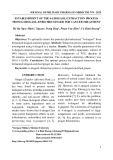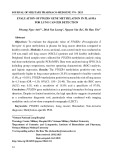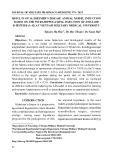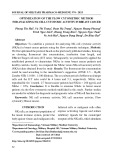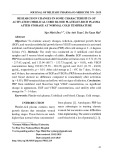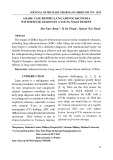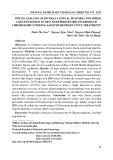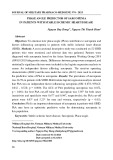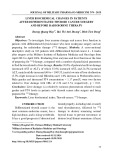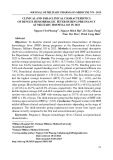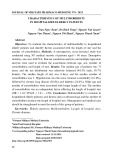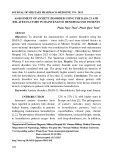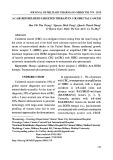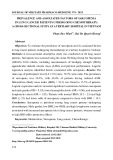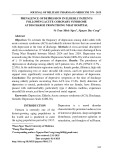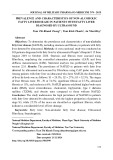
JOURNAL OF MILITARY PHARMACO-MEDICINE N04 - 2025
5
ESTABLISHMENT OF THE 6-SHOGAOL EXTRACTION PROCESS
FROM 6-SHOGAOL-ENRICHED GINGER FOR CANCER TREATMENT
Ho Ba Ngoc Minh1, Nguyen Trong Diep1, Pham Van Hien1, Vu Binh Duong1*
Abstract
Objectives: To optimally extract the potential phytochemical “6-shogaol” from
fermented shogaol-enriched ginger. Methods: Extraction process parameters were
investigated using 6-shogaol as a marker. Results: The suitable parameters of the
6-shogaol extraction process: Hot extraction using reflux equipment, solvent of
90% ethanol, solvent/herb ratio of 15/1, temperature of 70ºC, duration of
90 minutes, and two-time extraction. The 6-shogaol extraction efficiency was
89.61 ± 0.68%. Conclusion: The optimal process for 6-shogaol extraction from
fermented shogaol-enriched ginger has been studied.
Keywords: 6-shogaol; Extraction process; 6-shogaol-enriched ginger.
INTRODUCTION
Ginger (Zingiber officinale Rosc.), a
member of the Zingiberaceae family,
has been found to possess various
biological activities, including antioxidant,
anti-inflammatory, antibacterial, anti-
diabetic, and anti-cancer effects, etc.
[1, 2, 3]. These biological effects relate
to some active ingredients such as
6-gingerol, zingiberol, etc. Many
studies have shown that 6-shogaol has
more potent therapeutic effects in anti-
inflammatory, antioxidant, and cancer-
preventing than 6-gingerol [4, 5].
Moreover, 6-shogaol inhibited the
growth of several cancer lines, such as
lung, breast, and cervical cancer etc.
[6]. However, the 6-shogaol content in
dried ginger (Can Khuong) is very low,
while in fresh ginger, it is almost
undetectable [7]. To solve the problem,
some studies have been conducted to
enrich 6-shogaol by dehydrating
6-gingerol. The conversion of 6-gingerol
to 6-shogaol is accelerated in high-
temperature and acidic environments
[4, 8]; this process is referred to as
ginger fermentation.
1Vietnam Military Medical University
*Corresponding author: Vu Binh Duong (vbduong2978@gmail.com)
Date received: 05/12/2024
Date accepted: 05/02/2025
http://doi.org/10.56535/jmpm.v50i4.1119





